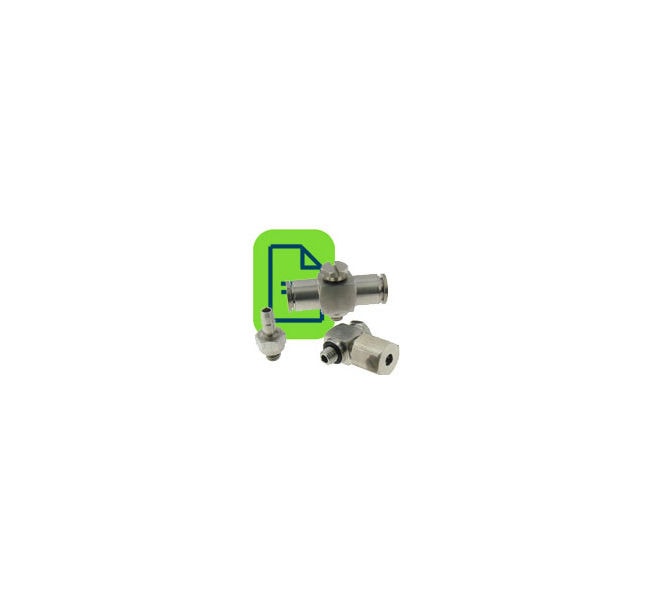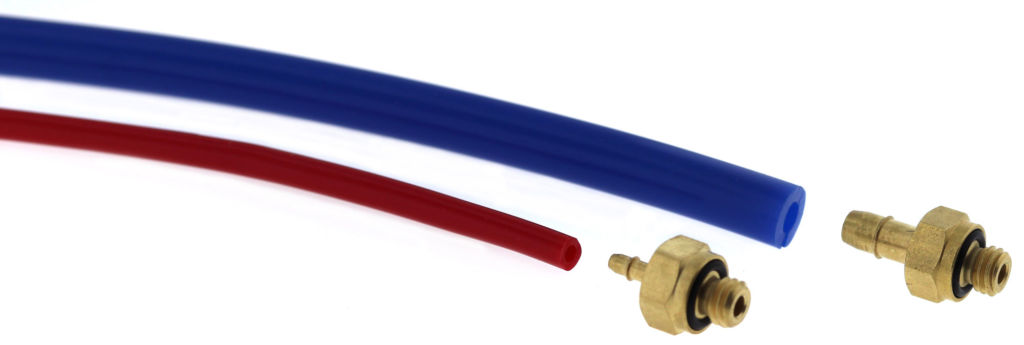
Installation Procedure:
Video Tutorial
Barb and Tubing Selection
1.) Select the correct barb for the polyurethane tubing size you are using. Tubing is often specified by the outside diameter, however barbed style fittings seal along the inside diameter of the tubing. Therefore, make certain you know the inside diameter of the tubing. Match the inside diameter of your polyurethane tubing with the correct barb size. For example, the Beswick MUT-1012 (1/16 inch ID) tubing fits our “1012” barb size, and the Beswick MUT-1332 (1/8 inch ID) tubing fits our “1332” barb size. Helpful information can be found at:
Full Barbed Fitting Listing
MUT Series Polyurethane Tubing
MH Series Straight Barbed Fittings
Cut Tubing Properly
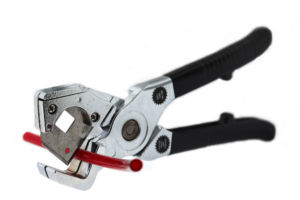
2.) For the best results, the end of the tubing should be cut perpendicular (90 degrees) to the axis of the tubing. A properly cut tube is easier to install and seat against the fitting body, than an improperly cut tube. Tubing cutters, like the cutter shown in the photo, work well for this purpose.
Tubing Clamps

3.) If you are using genuine Beswick barbed fittings, tubing clamps (see below links) are not required for most applications. In static tests, the innovative Beswick “line contact barb” holds 85 Shore A durometer polyurethane tubing beyond its burst pressure. Nevertheless, it is good practice to consider the use of tubing clamps when the working pressure exceeds 80 psi (depending on the conditions and severity of your application). A tubing clamp is always recommended for safety reasons when pressures are greater than 100 psi. If you decide to use a tubing clamp, slide it over the outside diameter of the tubing prior to pushing the tubing onto the barbed fitting.
MPC Series Clamps
MKC Series Clamps
MHC Series Clamps
Push Tubing Over Barb
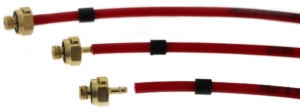
4.) Push the polyurethane tubing onto the lead in chamfer of the barbed fitting. Continue pushing the tubing past the barb and onto the fitting shank until the tubing is seated up against the hex or round surface of the fitting body.
Position Clamp Properly

5.) If you are using a tubing clamp, slide the clamp toward the fitting so that it is positioned over the barb and against the hex or round surface of the barbed fitting.
Removal Procedure:
NOTE: Barbed style fittings provide secure connections for the life of the product. Barbed fittings are not typically (there are exceptions involving non-standard barbs) selected when the tubing will be removed and re-installed numerous times.
Remove Tubing Clamp

1.) If you used a tubing clamp, remove the tubing clamp.
Remove Tubing – Pulling
2.) The “natural” inclination for most assemblers is to pull the tubing off the barb. Pulling on the tubing constricts the ID of the tubing, which tends to hold the tubing onto the barb tighter (similar to the “finger trap” toy). If you pull hard enough, the tubing WILL come off the barb. A well designed barb will often remove a piece of tubing from the tubing wall. You can reuse the tubing, however cut the damaged end of the tubing off so that an unblemished piece of tubing will mate against the barb upon re-installation.
Remove Tubing – Cut Small Wedge
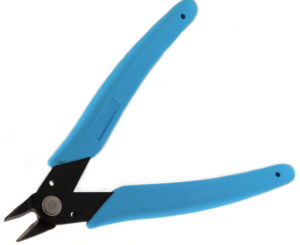
3.) A method that works well, and does not require the strength necessary to pull the tubing off the barb, is to cut off a small wedge shaped section from the tubing behind the “line contact” barb. General purpose diagonal, flush, shear cutters (examples are the Xcelite 170M and Xuron 170-ii) work well for this purpose. Position the cutter carefully so you do not scratch the barb as you remove the small wedge shaped section from the tubing.
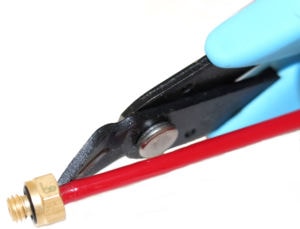
After cutting a small piece of the tubing, pull the tubing to the side (off axis with the fitting). The tubing will come off relatively easily.

An alternate tubing removal approach is to push the tubing off the barb from the hex or round end of the fitting. This avoids the tubing ID restriction problem. In practice, this method is not easy to accomplish.
The use of a knife type tool to cut the tubing off along the axis of the tubing should be AVOIDED if at all possible or done VERY CAREFULLY because of the possibility of damaging the sealing surface of the barb.
Tubing – Cut Damaged End
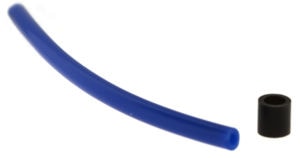
4.) Cut the damaged end of the tubing off so that an unblemished piece of tubing will seal against the barb upon re-installation.
NOTE: This tutorial focuses on the use of polyurethane tubing with barbed style fittings, however the procedures outlined in this document work well with other tubing materials that exhibit good-to-excellent memory characteristics. Two examples are vinyl (PVC) and low density polyethylene (LLDPE) tubing. Other tubing materials, such as silicone and fluorocarbon, can also be used successfully with barbed style fittings, but there are additional considerations that must be taken into account.
